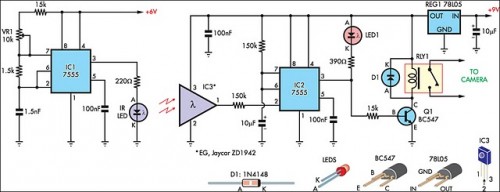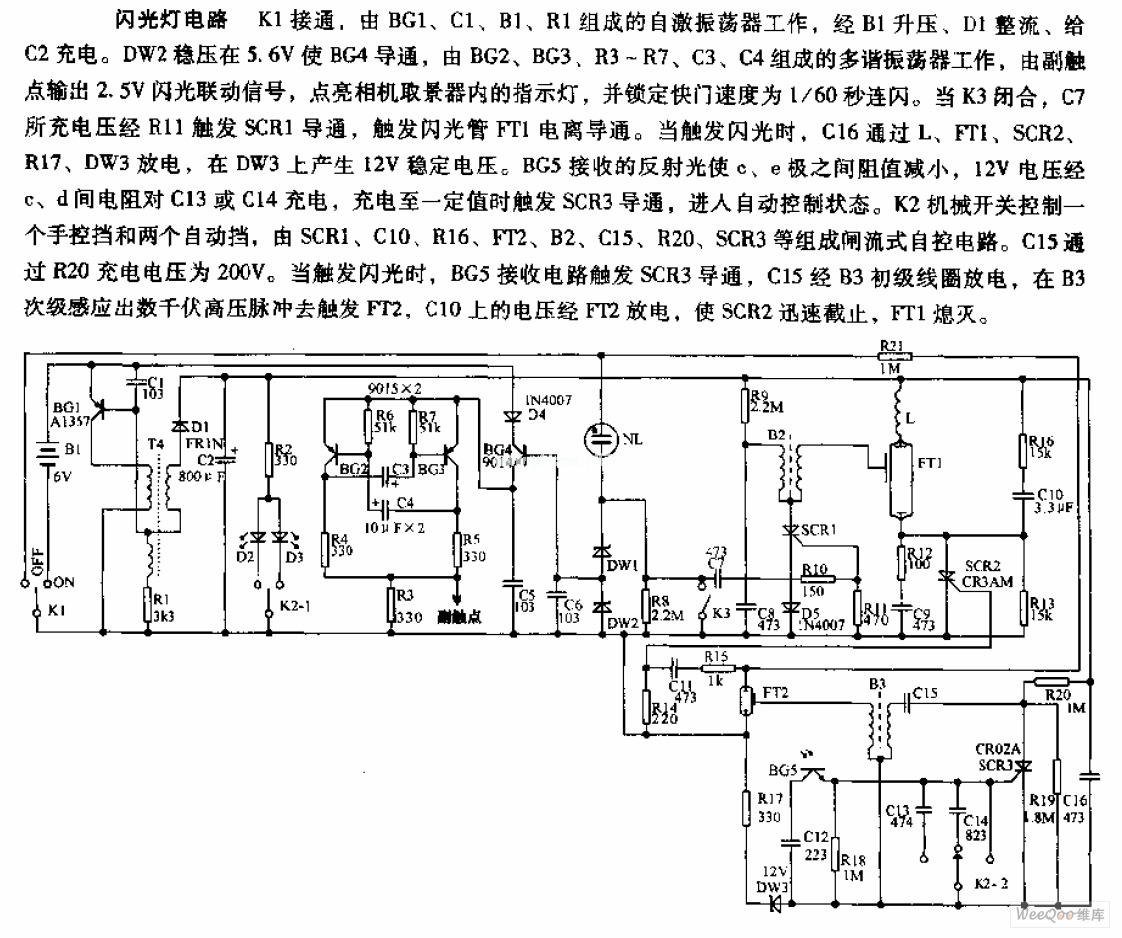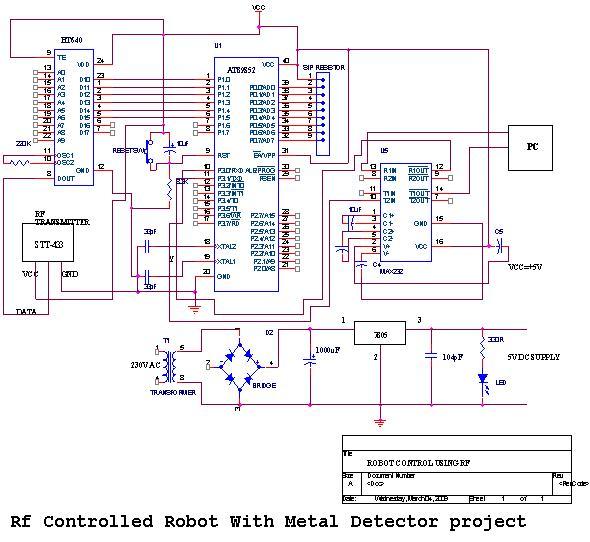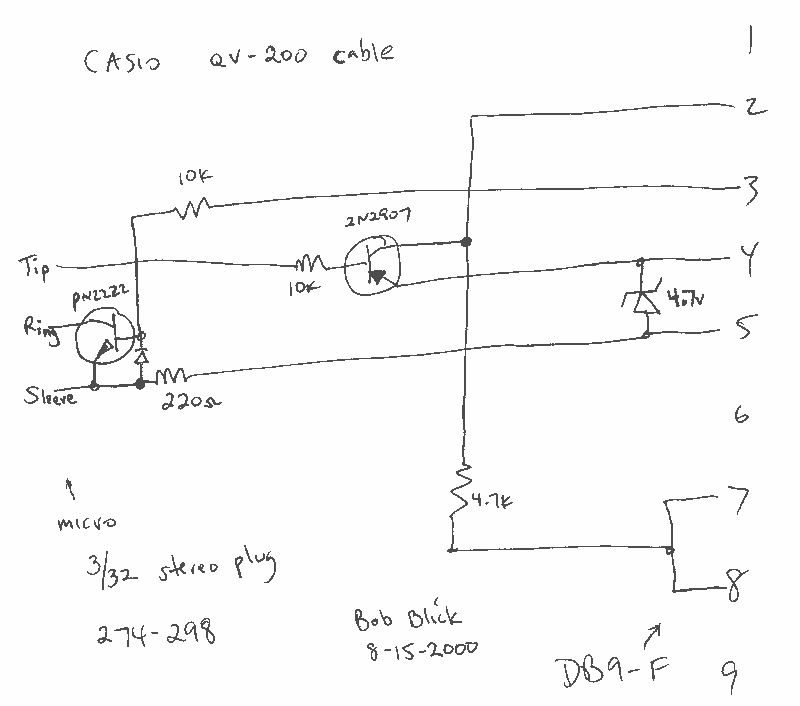
camera
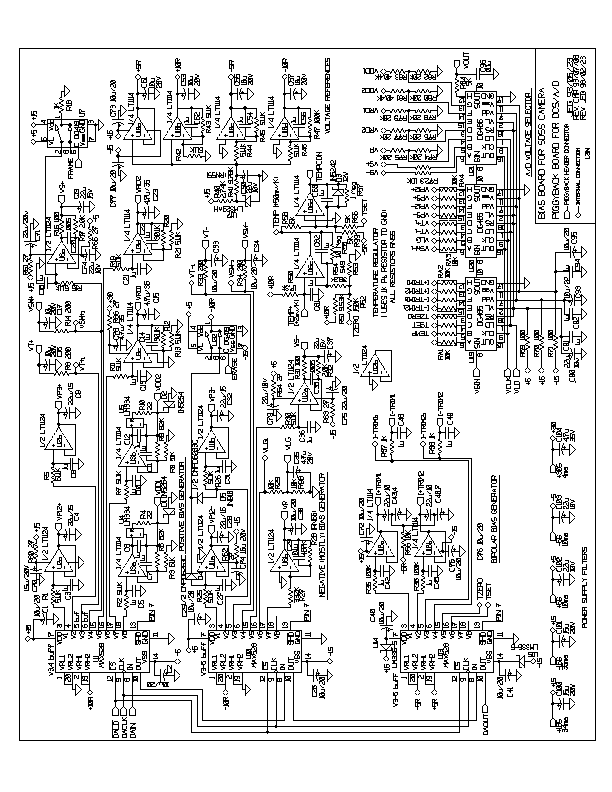
The photometric camera for the SDSS consists of two TDI scanning CCD arrays: one featuring 30 Tektronix/SITe 2048 x 2048 CCDs arranged in a 5 by 6 array for five-color photometry, and the other composed of 24 2048 x 400 chips dedicated to astrometry and focus monitoring. This document discusses these arrays, the filter system, the telescope focusing scheme during imaging scans, and the CCDs along with their associated electronics for both the camera and the spectrograph. Key considerations in selecting the filter system include achieving the largest possible color baseline and utilizing filters with existing data. The Thuan-Gunn (1976) uvgriz system, previously employed for research at Palomar on distant clusters, avoids the 5577 Å night sky line, while the i band cuts off in the near-infrared, just before the major OH bands. The g and r filters align closely with the J and F bands of the new Palomar Sky Survey. The uvgriz filters cover the entire wavelength interval and are nearly uniformly spaced in logarithmic wavelength. However, they are relatively narrow, and all except the u band could benefit from widening to enhance system efficiency. A filter system has been designed that resembles ugriz, facilitating easy transformation between the two systems, with g, r, and i filters maximized in width while minimizing overlap. The u band is intended to be effective, remaining mostly between the Balmer jump and the atmospheric cutoff, limiting its width to that of the Thuan-Gunn u band. The new filter system is designated as u` g` r` i` z`. The response curves and sensitivity data for the coatings and CCDs are illustrated in Figure 4.1. The SDSS system response curves depict expected total quantum efficiencies of the camera plus telescope on the sky, both without atmospheric extinction (upper curves) and modified by extinction at 1.2 airmasses (lower curves). The characteristics of the filters are summarized as follows: u`, a band with an effective wavelength of 3540 Å, a full width at half-maximum of 570 Å, and a peak transmission of 60% (despite minor red leak issues solvable with suitable coatings); g`, a wide blue-green band centered at 4770 Å (full width at half-maximum of 1370 Å); r`, a red band of equivalent width centered at 6230 Å; i`, a far-red band centered at 7630 Å with a width of 1530 Å; and z`, a near-infrared band centered at 9130 Å with a width of 950 Å. These bands maintain the advantages of the uvgriz system by avoiding the 5577 Å [OI] line, with the i` band cutting off before significant OH brightening and water absorption occurs just beyond 9000 Å. All filters, except u`, are straightforward to manufacture and exhibit high central transmission; the fabrication of u` filters posed challenges, but the outcomes are satisfactory. The filters are constructed from one or more Schott colored glass elements combined with a single-surface interference film that serves various purposes across different filters. The u` filter comprises 1 mm of UG11 and 1 mm of BG38, with an interference layer that acts as an anti-reflection coating within the filter passband and effectively blocks red light within a few hundred Å around 7000 Å; the glass filters provide adequate red rejection outside this region, though the uncoated filter has a peak transmission of about two percent in that area. The coated filter achieves a maximum transmission of approximately 10^-4 outside the primary band. The g` filter is made from 2 mm of GG400 and 3 mm of BG38, featuring a film that functions as a short-pass element cutting on at 5500 Å; the BG38 efficiently blocks red light up to the silicon limit. The longer filters consist of additional specifications to be detailed.
The SDSS photometric camera is an advanced imaging system designed to capture and analyze astronomical data with high precision. The two TDI scanning CCD arrays serve distinct but complementary roles, enhancing the overall capability of the camera. The primary array, with its extensive number of CCDs, enables detailed color photometry, allowing for the analysis of celestial objects across multiple wavelengths. The secondary array, focused on astrometry and focus monitoring, ensures that the telescope maintains optimal performance during observations, crucial for obtaining clear and usable data.
The filter system is a critical component of this camera, as it directly influences the quality and range of the data collected. The design considerations prioritize a broad color baseline while ensuring compatibility with existing data sets. The selection of the Thuan-Gunn system as a reference point underscores the importance of historical data in guiding contemporary filter design. The intention to widen the g, r, and i filters aims to improve system efficiency without compromising the integrity of the data collected.
The response curves generated for the camera system are essential for understanding its performance characteristics. These curves illustrate how the camera responds to various wavelengths under different atmospheric conditions, providing insight into the expected sensitivity and efficiency of the system. The careful design of each filter, particularly the challenging u` filter, reflects a commitment to achieving high performance while addressing practical manufacturing challenges.
In summary, the SDSS photometric camera represents a sophisticated integration of advanced technology and thoughtful design, aimed at enhancing the study of the universe through detailed imaging and data collection. The combination of well-defined filter characteristics, robust CCD arrays, and a focus on efficiency positions this system as a valuable tool for astronomers and researchers in the field.The photometric camera for the SDSS consists of two TDI scanning CCD arrays, one, using 30 Tektronix/SITe 2048 x 2048 CCDs in a 5 by 6 array for five-color photometry, and the other using 24 2048 x 400 chips for astrometry and focus monitoring. We here discuss these arrays, the filter system, the scheme for focusing the telescope during an imaging
scan, and the CCDs and associated electronics for the camera and the spectrograph. There are several important considerations in selecting the filter system. First, one wants the largest color baseline possible. It is desirable but not necessary to use filters for which there already exist a large amount of data. For example, the Thuan-Gunn (1976), (see also Schneider et al. 1983) uvgriz system, which has been used for much of the work at Palomar on distant clusters, avoids the 5577G… night sky line, and the i band cuts off in the near-infrared just shortward of the major OH bands.
The g and r filters more-or-less match the J and F bands of the new Palomar Sky Survey. The uvgriz filters provide coverage of the total wavelength interval and are almost uniformly spaced in log lambda. They are, however, fairly narrow, and all except u could be usefully widened for a system like ours in which efficiency is of paramount importance.
We have designed a filter system similar to ugriz which should transform to and from it with little difficulty, in which the g, r and i filters are as wide as practicable consistent with keeping the overlap small. If we wish the u band to be a "good" one which is almost entirely contained between the Balmer jump and the atmospheric cutoff (we can clearly not do anything about that end), it cannot be significantly wider than Thuan-Gunn u.
We call the new system u` g` r` i` z`. The response curves and sensitivity data with the coatings and CCDs we will use are shown in Figure 4. 1. The SDSS system response curves. The responses are shown without atmospheric extinction (upper curves) and as modified by the extinction at 1.
2 airmasses (lower curves). The curves represent expected total quantum efficiencies of the camera plus telescope on the sky. The characteristics, are, in brief: u`, a band with 3540G… effective wavelength, 570G… full width at half-maximum, and 60% peak transmission (such a filter can be made with available glasses; it has a small redleak problem which can be solved with suitable coatings); g`, a very wide blue-green band centered on 4770G… (full width at half-maximum 1370G…); r`, a red band of the same width centered at 6230G…; i`, a far-red band centered at 7630G… with a width of 1530G…, and z`, a near-infrared band centered at 9130G… with a width of 950G…. These bands share the advantages of the uvgriz system of avoiding the 5577G… [OI] line, and the i` band cutting off before the catastrophic OH brightening and water absorption set in just longward of 9000G….
All the filters except u` are easy to make and have very high central transmission; building the u` filters proved to be difficult, but the results are quite satisfactory. The filters are all made with one or more Schott colored glass elements in combination with a single-surface interference film which serves different purposes in different filters.
The u` filter is made of 1 mm of UG11 and 1 mm of BG38 with an interference layer which both acts as an antireflection coating in the filter passband and an efficient red blocker in a region a few hundred G… wide around 7000 G…; the glass filters have sufficient red rejection outside this region, but the uncoated filter has a peak transmission of about two percent there. The coated filter has a maximum transmission of about 10-4 outside the primary band. The g` filter is made of 2 mm of GG400 and 3 mm of BG38, with a film which acts as a short-pass element cutting on at 5500 G…; the BG38 blocks the red efficiently out to the silicon limit.
The three longer filters consist of a 🔗 External reference
The SDSS photometric camera is an advanced imaging system designed to capture and analyze astronomical data with high precision. The two TDI scanning CCD arrays serve distinct but complementary roles, enhancing the overall capability of the camera. The primary array, with its extensive number of CCDs, enables detailed color photometry, allowing for the analysis of celestial objects across multiple wavelengths. The secondary array, focused on astrometry and focus monitoring, ensures that the telescope maintains optimal performance during observations, crucial for obtaining clear and usable data.
The filter system is a critical component of this camera, as it directly influences the quality and range of the data collected. The design considerations prioritize a broad color baseline while ensuring compatibility with existing data sets. The selection of the Thuan-Gunn system as a reference point underscores the importance of historical data in guiding contemporary filter design. The intention to widen the g, r, and i filters aims to improve system efficiency without compromising the integrity of the data collected.
The response curves generated for the camera system are essential for understanding its performance characteristics. These curves illustrate how the camera responds to various wavelengths under different atmospheric conditions, providing insight into the expected sensitivity and efficiency of the system. The careful design of each filter, particularly the challenging u` filter, reflects a commitment to achieving high performance while addressing practical manufacturing challenges.
In summary, the SDSS photometric camera represents a sophisticated integration of advanced technology and thoughtful design, aimed at enhancing the study of the universe through detailed imaging and data collection. The combination of well-defined filter characteristics, robust CCD arrays, and a focus on efficiency positions this system as a valuable tool for astronomers and researchers in the field.The photometric camera for the SDSS consists of two TDI scanning CCD arrays, one, using 30 Tektronix/SITe 2048 x 2048 CCDs in a 5 by 6 array for five-color photometry, and the other using 24 2048 x 400 chips for astrometry and focus monitoring. We here discuss these arrays, the filter system, the scheme for focusing the telescope during an imaging
scan, and the CCDs and associated electronics for the camera and the spectrograph. There are several important considerations in selecting the filter system. First, one wants the largest color baseline possible. It is desirable but not necessary to use filters for which there already exist a large amount of data. For example, the Thuan-Gunn (1976), (see also Schneider et al. 1983) uvgriz system, which has been used for much of the work at Palomar on distant clusters, avoids the 5577G… night sky line, and the i band cuts off in the near-infrared just shortward of the major OH bands.
The g and r filters more-or-less match the J and F bands of the new Palomar Sky Survey. The uvgriz filters provide coverage of the total wavelength interval and are almost uniformly spaced in log lambda. They are, however, fairly narrow, and all except u could be usefully widened for a system like ours in which efficiency is of paramount importance.
We have designed a filter system similar to ugriz which should transform to and from it with little difficulty, in which the g, r and i filters are as wide as practicable consistent with keeping the overlap small. If we wish the u band to be a "good" one which is almost entirely contained between the Balmer jump and the atmospheric cutoff (we can clearly not do anything about that end), it cannot be significantly wider than Thuan-Gunn u.
We call the new system u` g` r` i` z`. The response curves and sensitivity data with the coatings and CCDs we will use are shown in Figure 4. 1. The SDSS system response curves. The responses are shown without atmospheric extinction (upper curves) and as modified by the extinction at 1.
2 airmasses (lower curves). The curves represent expected total quantum efficiencies of the camera plus telescope on the sky. The characteristics, are, in brief: u`, a band with 3540G… effective wavelength, 570G… full width at half-maximum, and 60% peak transmission (such a filter can be made with available glasses; it has a small redleak problem which can be solved with suitable coatings); g`, a very wide blue-green band centered on 4770G… (full width at half-maximum 1370G…); r`, a red band of the same width centered at 6230G…; i`, a far-red band centered at 7630G… with a width of 1530G…, and z`, a near-infrared band centered at 9130G… with a width of 950G…. These bands share the advantages of the uvgriz system of avoiding the 5577G… [OI] line, and the i` band cutting off before the catastrophic OH brightening and water absorption set in just longward of 9000G….
All the filters except u` are easy to make and have very high central transmission; building the u` filters proved to be difficult, but the results are quite satisfactory. The filters are all made with one or more Schott colored glass elements in combination with a single-surface interference film which serves different purposes in different filters.
The u` filter is made of 1 mm of UG11 and 1 mm of BG38 with an interference layer which both acts as an antireflection coating in the filter passband and an efficient red blocker in a region a few hundred G… wide around 7000 G…; the glass filters have sufficient red rejection outside this region, but the uncoated filter has a peak transmission of about two percent there. The coated filter has a maximum transmission of about 10-4 outside the primary band. The g` filter is made of 2 mm of GG400 and 3 mm of BG38, with a film which acts as a short-pass element cutting on at 5500 G…; the BG38 blocks the red efficiently out to the silicon limit.
The three longer filters consist of a 🔗 External reference
